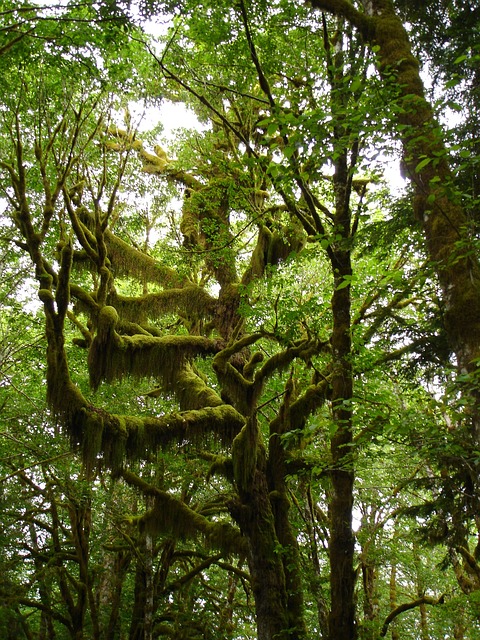As mentioned previously, silence as a facilitator of mindfulness does not involve the absence of sound. Gordon Hempton – sound recordist, acoustic ecologist, and activist for silence in the world – maintains that silence is “an acoustic state , free of intrusions of modern, man-made noise”. He has spent his life work recording natural sounds and advocating for the preservation of the silence of nature and the development of our capacities to really hear and listen to the natural sounds to be found in forests, treed spaces, beaches, rivers and wherever nature is calling. His book, One Square Inch of Silence: One Man’s Quest to Preserve Quiet, recounts the recording of his auditory journey across America and the discovery of one of the quietest places in the world in the form of the Hoh River Valley rainforest in Olympic National Park, close to Washington.
Gordon Hempton maintains that each place is a unique combination of sounds and encourages us to really listen to heighten our perception of the “soundtracks” that surround us and to become aware of the “quiet between the notes”. According to him, nature’s silence is everything and encapsulates “who we were, who we are, and who we need to be”. By “self-quieting” through the art of listening we can become awake to silence and the experience of just being-in-nature.
The healing power of nature
In her book, Turning Down the Noise, Christine Jackman devotes an entire chapter to “nature” and the research highlighting the healing power of nature, and the role of the Japanese practice of “Forest Bathing”. The research demonstrates how nature can reduce stress and anxiety, lower blood pressure and improve mood. Other research indicates that by becoming absorbed in nature, we can find real joy and beauty in our lives and reduce the “emotional inflammation” resulting from “nature-deficit disorder” and the stresses of challenging times such as the pervasive presence of the pandemic.
Reflection
It is only when you attempt to tune into the natural sounds within your immediate suburban environment that you become acutely aware of the level of noise pollution that you experience regularly – the sounds of radios and advertising, traffic noise (buses, trains, cars, planes, and trucks) and the heavily polluting noise of equipment used in house building, renovation and repair, and grounds maintenance. This is in addition to the digital noise that we experience through our mobile phones and computers, e.g., social media and incessant, disruptive advertising.
We can grow in mindfulness and realise the associated benefits if we can make the time to experience nature in pristine locations such as rainforests, undeveloped beaches, and quiet rivers. As we learn the art of self-quieting by paying attention to the sounds and silence of our natural sounds, unpolluted by man-made noise, we can find a calmness and equanimity that reflects our natural environment.
A stunning resource in this area is the On Being podcast produced by Krista Tippett who interviews people, such as Gordon Hempton, who can throw light on “what it means to be human”. Gordon asserts in his interview with Krista that when we listen to the silence of nature “our listening horizon extends”.
____________________________
Image by Ben Travis from Pixabay
By Ron Passfield – Copyright (Creative Commons license, Attribution–Non Commercial–No Derivatives)
Disclosure: If you purchase a product through this site, I may earn a commission which will help to pay for the site, the associated Meetup group and the resources to support the blog.
